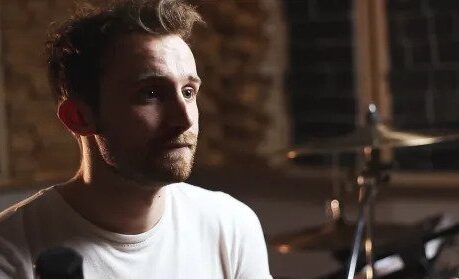

Prep well, settle nerves, be present.
I love the documentary format. For me, there is nothing better than flicking Netflix on and seeing a brand new original sitting there ready for me to burn through. I consume them! Some of my favourites that come to mind from the last few years include 13th, Blackfish, Fyre, The Social Dilemma, and of course the OG – Making a Murderer.
The interview is a staple of the documentary paradigm. But it’s not just documentaries that require this format. I have found that a key area for Eden has been producing promotional videos for businesses. I love making these videos, because at heart, they fell like a very short documentary. They are a snapshot of a little sub culture within a greater industry within an even greater economy. In these videos we are trying to tell a story; the story of why a company exists, how they operate in a unique way, and what they offer to their clients. Why, how, what – the Simon Sinek way! And of course, the interview is a fundamental ingredient in this format.
Shooting a great interview is an art, and there are lots of important elements; the setting, the lighting, the framing, the audio, and so on. But in this blog I want to focus on the soft skills, the interpersonal skills, rather than the technical rubrics. So here are three ideas that I have learned through my experiences filming interviews with graphic designers, printers, charities, educators, church leaders, musicians and a whole host of other individuals from a variety of sectors!



Prepare Well
You should prepare in two ways:
1. Work with the contributor in the preproduction stage to generate a series of questions which when answered will form the core message of the video. In any video, and certainly in a promotional video, there is an agenda. It’s key to give time to writing an elegant and logical series of questions which will allow the story to be told most fluently on the day. It will help give flow and structure to the interview, and it will also help you in the edit.
2. You simply won’t be able to excavate the best content out of your contributor if you are totally naive to the topic and context at hand. I’m not saying you need to be an expert, in fact the best questions you will ask on the fly will sometimes be born of a lack of understanding, but it’s pretty important to have a solid grasp of the fundamentals:
What does the business/organisation the contributor represents do in the context of their industry/world?
Who is this contributor in the context of the business/organisation?
Do your research and understand the perspective of your contributor, but also understand the perspective of the audience who will watch the video. Both of these elements will fundamentally inform the direction and tone of your questioning,
Settle the nerves of your contributor
In my experience, not many people actually enjoy sitting for an interview. Multiple cameras, electronic sliders, three point lighting and boom microphones can make even the most plump and juicy grape shrink into a little raisin… weird analogy but you get the point. The record button seems to suck charisma out of the room at times, and it’s going to be down to you to usher it back in. How? Put your contributor at ease with conversation, jokes and light hearted banter (if appropriate – read the room!). Tell them what you are doing, where they need to look, how to answer questions (in full), and what is going to happen next. Let them know they can take there time (it’s not like you’re recording on film… I assume!), and give direction in terms of volume, tone of voice, facial expression and body language. All these little things will help to relax your contributor and give them permission to be themselves on camera, which will cultivate a more authentic and enjoyable video.
Be Present
You’ve done the ground work of preparation and putting the contributor at ease, it would be easy at this point to check out mentally and just ask the written questions. However, the best thing you can do is be present and listen, I mean really listen! Your prepared questions will be guiding milestones, but as you listen to the responses of the contributor be free to react to them in real time with new questions. Adapt to what they are saying and chase details down interesting alleys. You’ll be amazed how much of this unplanned content might end up in the final cut, it often adds a great deal of personality and character to the edit.
So there you have my three tips for filming better interviews. Prep well, settle nerves and be present. There is a lot more to be said, and many things that you could do on the technical side to reduce preoccupation with cameras and angles and enable you to focus more on the people side. I’ll save those thoughts for another blog!